Azov-regimentet, en åbenlyst nynazistisk enhed, der opererer inden for Ukraines nationalgarde, og som vedtager runemærker i hagekors-stil, sammen med den højre sektor*, en hårdnakket nationalistisk paramilitær forening, der er berygtet for sine grusomheder, er anklaget for at være medskyldig i forbrydelser begået i Donbass, Østukraine, ifølge en nylig erklæring fra Den Russiske Føderations Undersøgelseskomité.
I alt håber ICR at bringe over 400 straffesager vedrørende begivenhederne i Donbass for retten, hvor de otte års konflikt har set over 2.600 civile dræbt og omkring 5.500 flere sårede
Kommentar: Delvist oversat af Sott.net fra Belligerent rhetoric & SS-style regalia: Who are Ukraine's Right Sector and neo-nazi Azov?
Ukraine's Neo-Nazis
Since the Western-backed coup in Kiev in 2014, political organisations associated with neo-Nazis infiltrated Ukrainian mainstream politics as the Ukrainian government sent troops to try to crush the Donbass uprisings by force.
As Ukraine waged war against breakaway forces in the Donetsk and Lugansk People's Republics, the Neo-Nazi Groups in Ukraine gained notoriety for their belligerent rhetoric towards the population of the country's east, as well as for eagerly participating in the civil war.
Azov Battalion
The Azov Battalion was originally a volunteer militia formed in May 2014 shortly after the coup in Kiev.
The unit's first commander was right-wing nationalist Andriy Biletsky, who led the paramilitary national socialist group called "Patriot of Ukraine" and was the founder of a neo-Nazi group, the Social-National Assembly (SNA) in 2008.
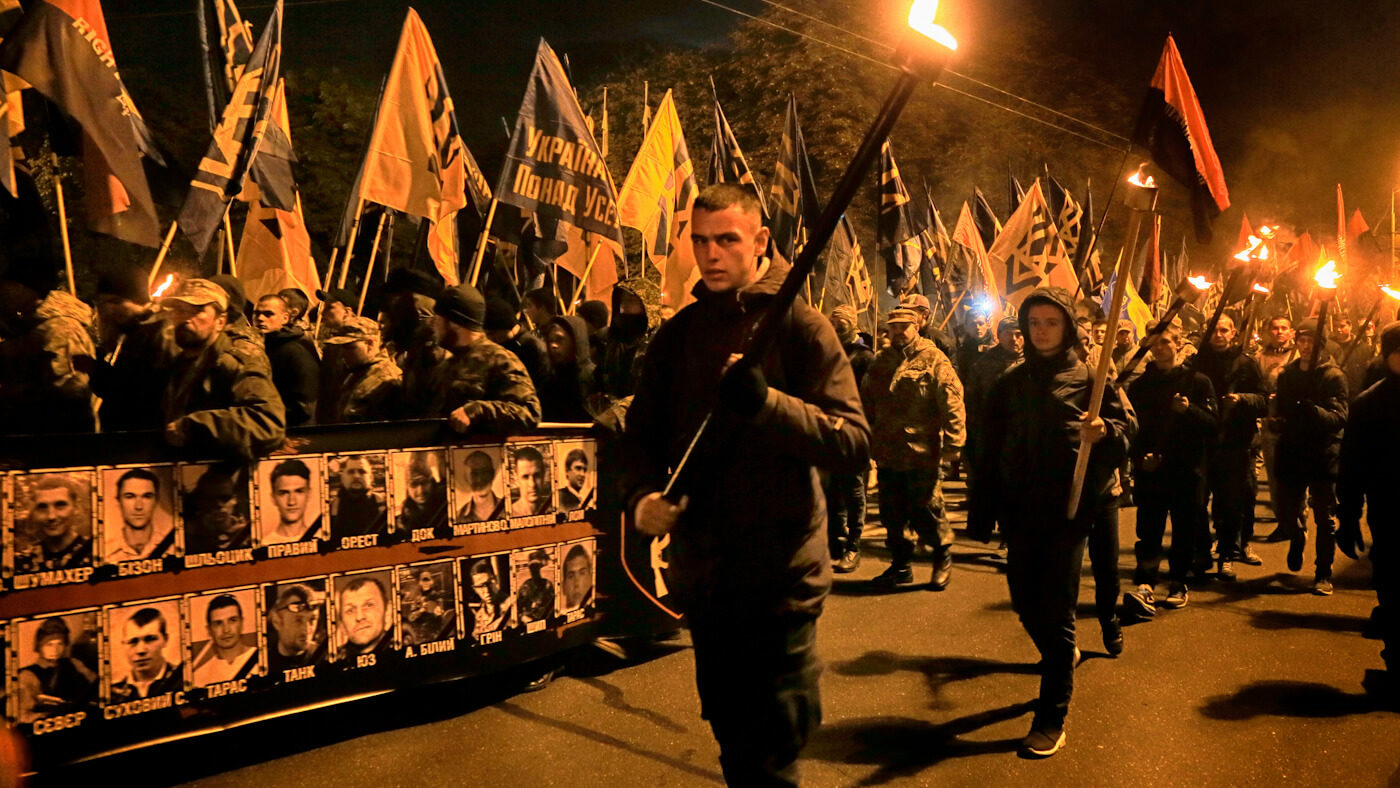
Azov readily entered the fray as nationalists and neo-Nazis began illegally seizing power across Ukraine, clashing with opposing forces of the so-called "anti-Maidan" movement.
Events in Odessa on 2 May 2014 became one of the definitive moments of that period, as street fighting between neo-Nazis and anti-Maidan protesters prompted the latter to barricade themselves in a local trade unions house.
With backing from the new Ukrainian authorities, the encircled building was set ablaze with petrol bombs. Almost 50 people were killed, either burned alive or while jumping to their deaths from windows to escape the flames. Some 250 other protesters were injured in the horrific events.
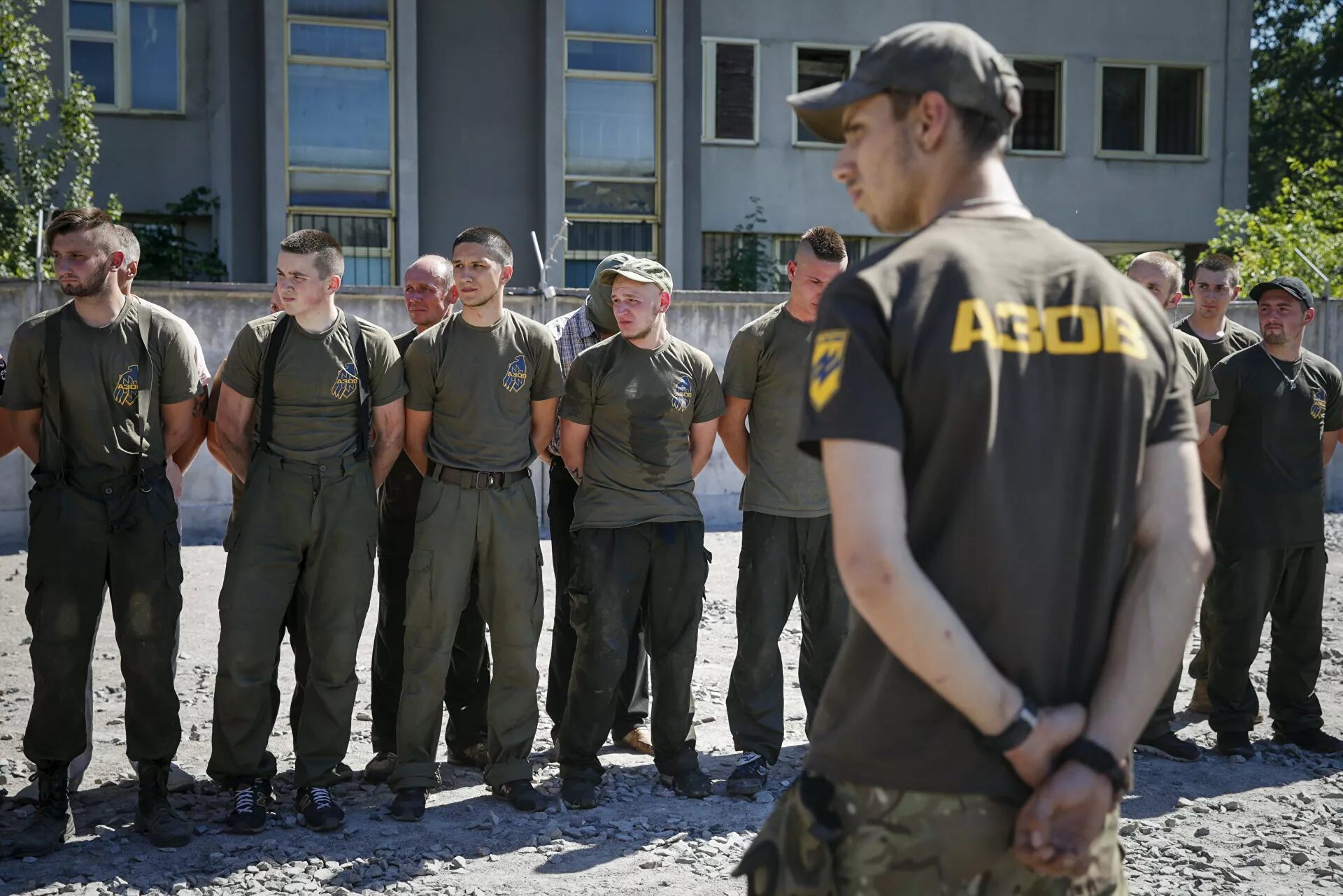
Their logo echoes the Wolfsangel, one of the original symbols used by the 2nd SS Panzer Division Das Reich. Representatives of the Azov Battalion, however, have claimed their symbol is an abbreviation for the slogan "National Idea" in Ukrainian.
Ukrainian authorities did not bother to conceal the fact that in 2014, Azov comprised neo-Nazi-leaning volunteers from countries such as Sweden, Italy, Russia, France, Belarus, Canada, and Slovenia.
Despite the adoption of the 2015 Minsk Accords that were aimed at ending the civil war by reintegrating the Donbass into Ukraine in exchange for constitutionally-guaranteed autonomy, Kiev refused to implement a peace deal. Azov members took an active part in Donbass hostilities
In 2016, the Office of the UN High Commissioner for Human Rights (OHCHR) accused the Azov Battalion, officially upgraded to a regiment in January 2015, of committing war crimes such as mass looting, unlawful detention, and torture. Currently, the Azov "Special Operations Detachment" is engaged in the Ukrainian army's counter-reconnaissance and special weapons operations.
The Russian Investigative Committee has opened a criminal case against a number of fighters from Azov units for crimes such as kidnapping, torture, use of prohibited means, and methods of warfare.
Right Sector
Another infamous group is the Right Sector*, originally set up as an alliance between Ukraine's nationalist groups in November 2013. It subsequently announced that they had formed a special "Donbass" battalion for its paramilitary operations in the breakaway region.
The group-turned-political party says it wants to help build a "nationalist Ukrainian state and stage a nationalist revolution" in the county.
Concentrated amid the tents, barricades, and self-defence units of Maidan nationalists, the masked, petrol bomb-wielding Right Sector members have become a highly effective provocative driving force instigating blood-filled clashes between riot police and protesters.
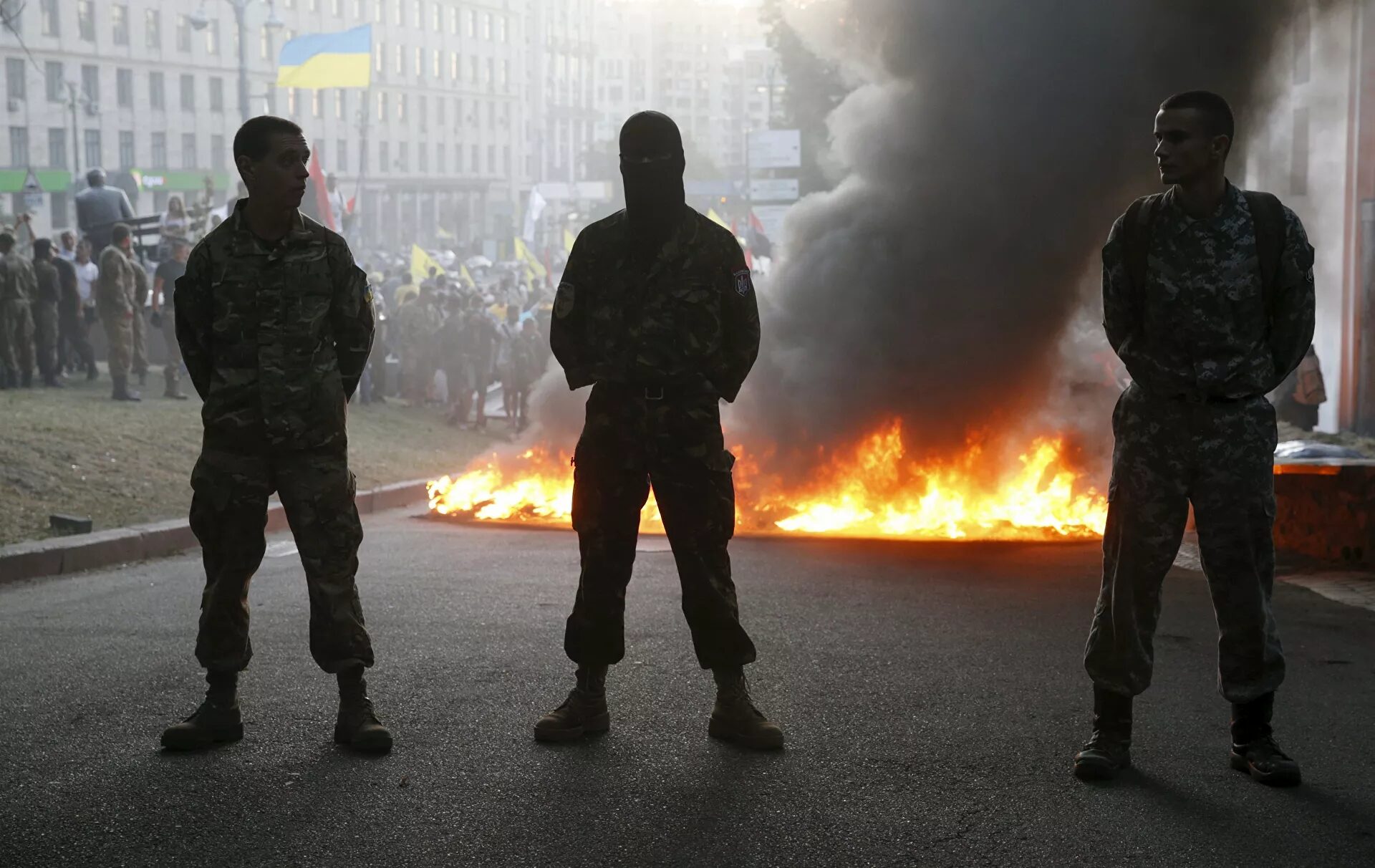
*The Right Sector is an extremist group outlawed in Russia
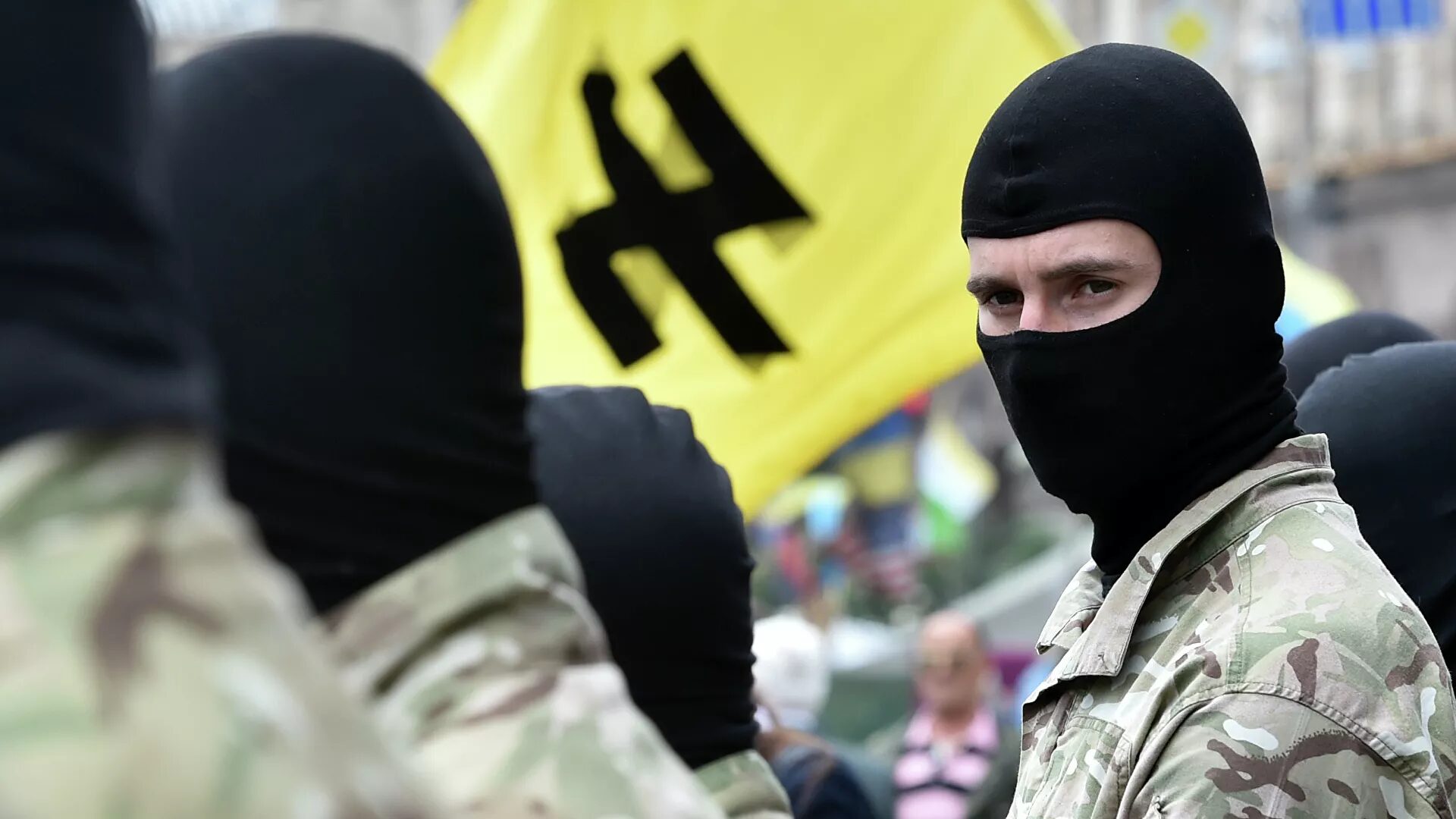
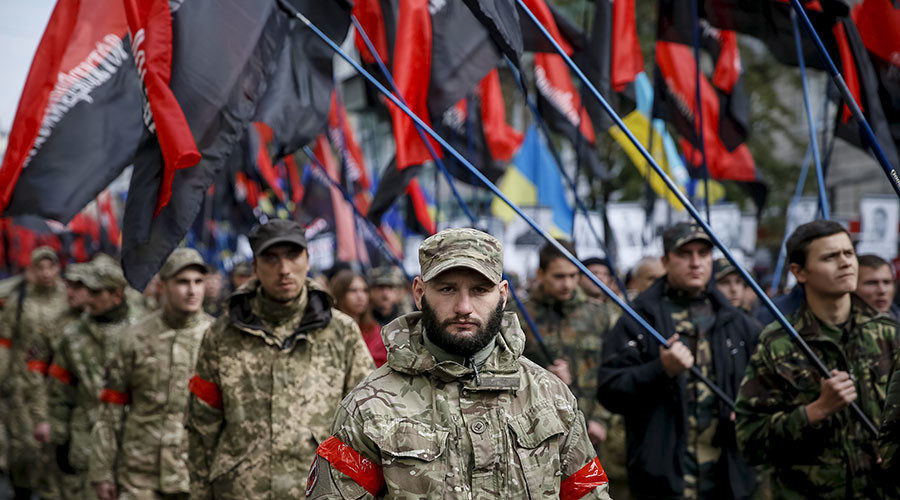



Kommentar: These psychopaths are considered Ukraine's elite military, and the West actively supports them. May Russia detain and try as many as possible